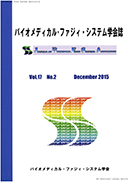Volume 21, Issue 2
Displaying 1-8 of 8 articles from this issue
- |<
- <
- 1
- >
- >|
-
2019Volume 21Issue 2 Pages Cover1-
Published: 2019
Released on J-STAGE: March 15, 2021
Download PDF (1764K) -
2019Volume 21Issue 2 Pages Toc1-
Published: 2019
Released on J-STAGE: March 15, 2021
Download PDF (1024K) -
2019Volume 21Issue 2 Pages 1-8
Published: December 28, 2019
Released on J-STAGE: March 15, 2021
Download PDF (1857K) -
2019Volume 21Issue 2 Pages 9-16
Published: December 28, 2019
Released on J-STAGE: March 15, 2021
Download PDF (1487K) -
2019Volume 21Issue 2 Pages 17-25
Published: December 28, 2019
Released on J-STAGE: March 15, 2021
Download PDF (2325K) -
2019Volume 21Issue 2 Pages 27-36
Published: December 28, 2019
Released on J-STAGE: March 15, 2021
Download PDF (4855K) -
2019Volume 21Issue 2 Pages 37-45
Published: December 28, 2019
Released on J-STAGE: March 15, 2021
Download PDF (1453K) -
2019Volume 21Issue 2 Pages 47-58
Published: December 28, 2019
Released on J-STAGE: March 15, 2021
Download PDF (2319K)
- |<
- <
- 1
- >
- >|
